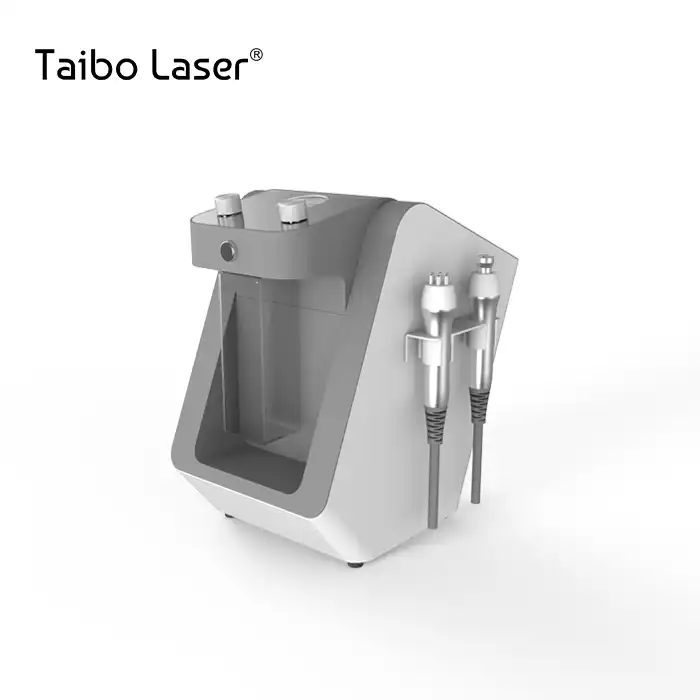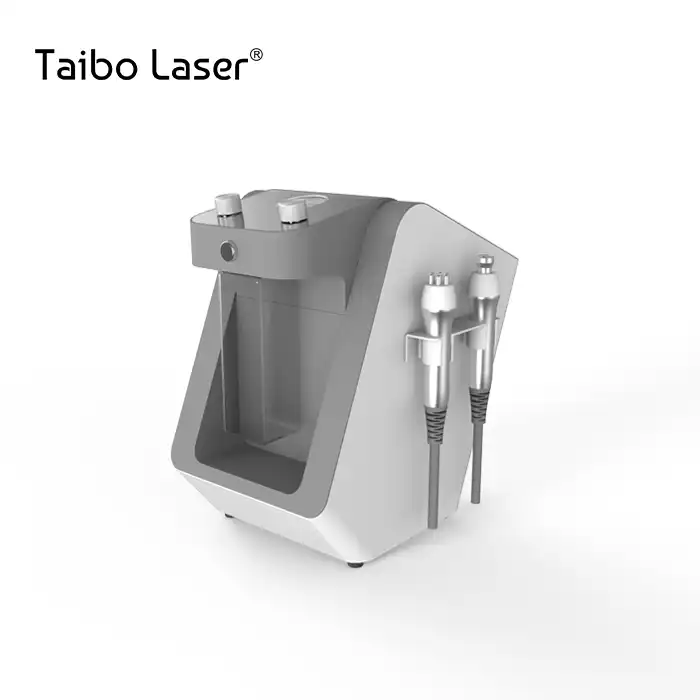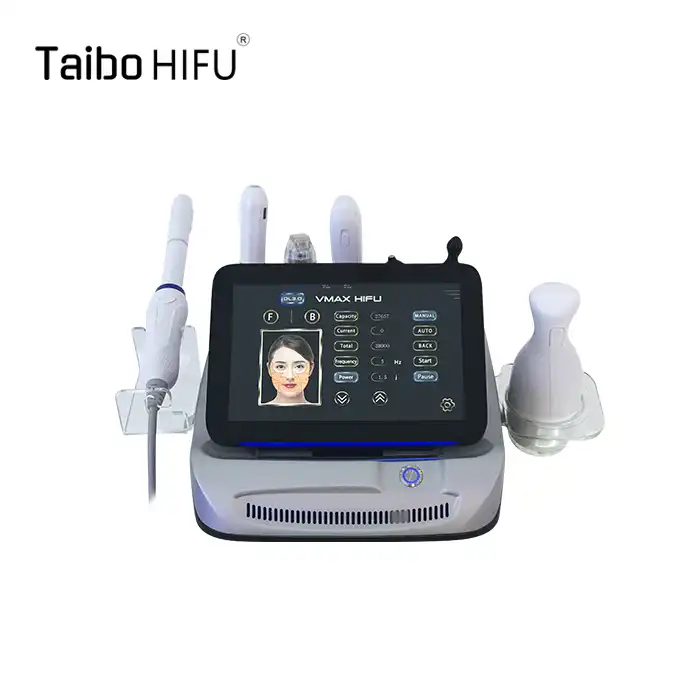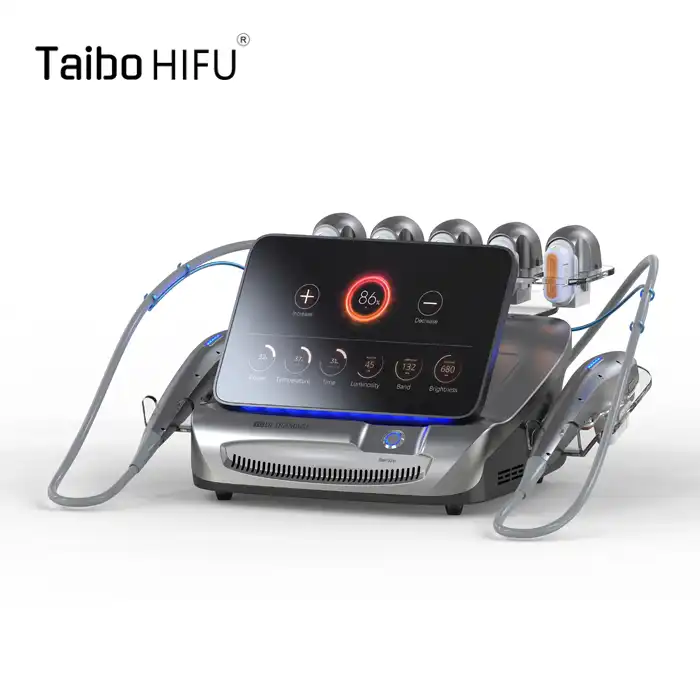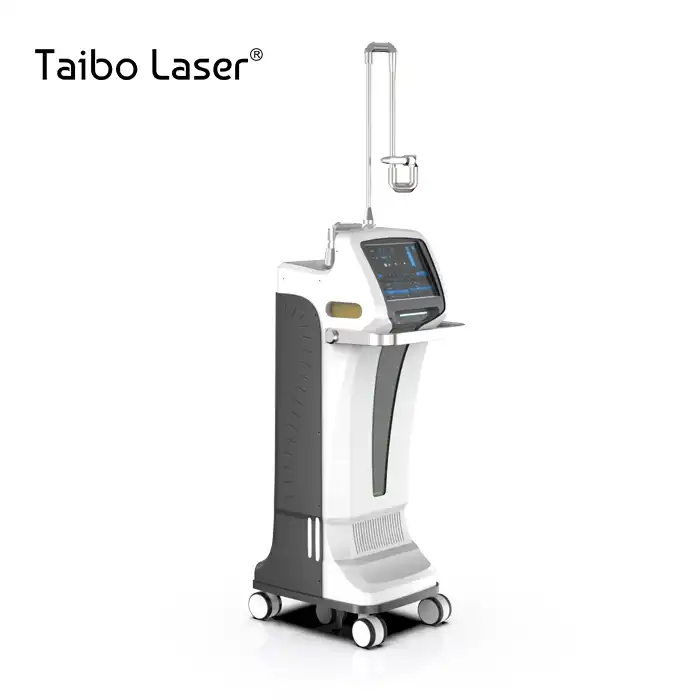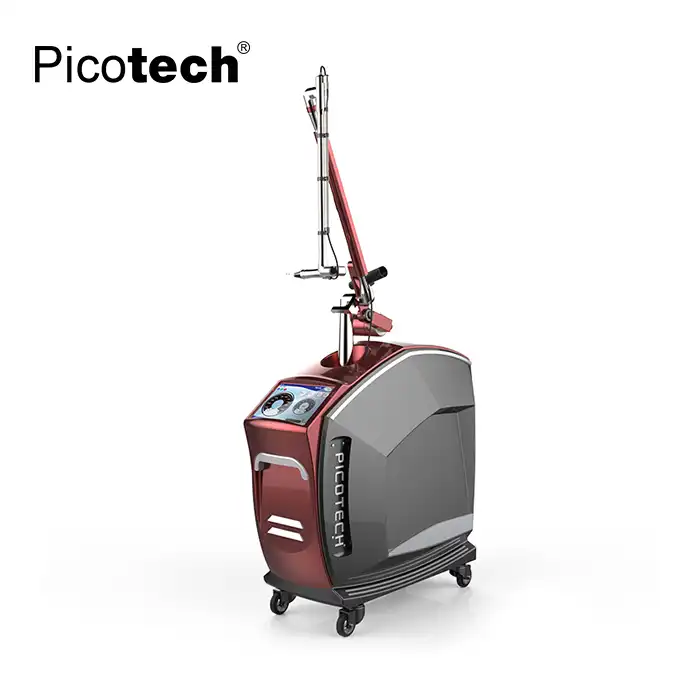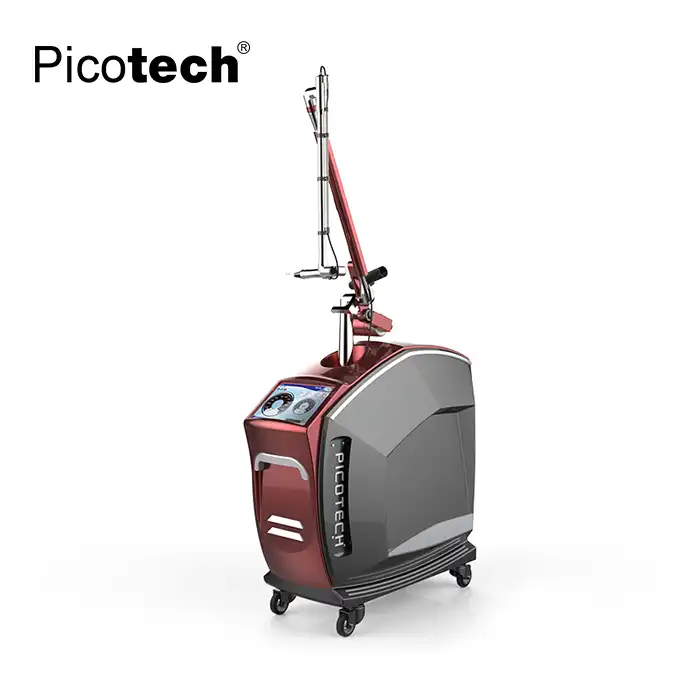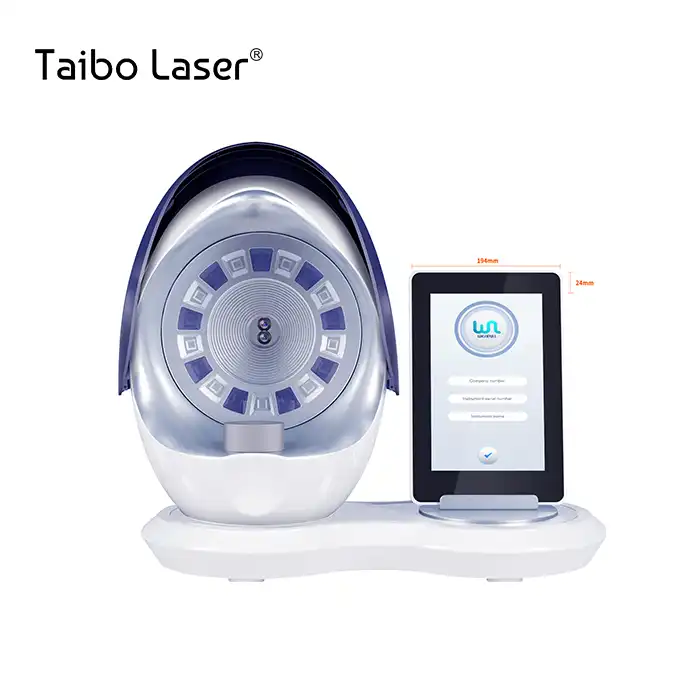
Nd YAG Q-Switched 532 nm 1064 nm Laser: The Gold Standard for Treating Pigmented Lesions in All Skin Types
2025-10-08 09:01:14
Imagine waking up each morning, looking in the mirror, and seeing stubborn dark spots, age spots, or unwanted pigmentation that refuses to fade despite countless skincare products and treatments. For millions of people worldwide, hyperpigmentation issues create significant confidence challenges and impact their daily lives. The revolutionary nd yag q switched 532 nm 1064 nm laser technology has emerged as the definitive solution for treating these persistent pigmentation concerns across all skin types. This advanced laser system represents a breakthrough in aesthetic medicine, offering precise, effective, and safe treatment for various pigmented lesions that were previously difficult to address. Understanding how this gold standard technology works and its comprehensive applications can help you make informed decisions about achieving clear, even-toned skin.
Understanding Q-Switched Nd YAG Laser Technology and Its Wavelength Benefits
The nd yag q switched 532 nm 1064 nm laser operates on the principle of selective photothermolysis, utilizing ultra-short nanosecond pulses to target melanin-containing structures within the skin. This sophisticated technology combines two distinct wavelengths that work synergistically to address different depths and types of pigmented lesions. The system generates intense energy bursts lasting only 6 nanoseconds, creating a photoacoustic effect that shatters pigment particles into microscopic fragments small enough for the body's natural lymphatic system to eliminate. The dual-wavelength capability of the nd yag q switched 532 nm 1064 nm laser makes it uniquely versatile in treating various pigmentation concerns. The 532nm wavelength, produced through frequency doubling, appears as a green light that specifically targets superficial pigmented lesions in the epidermis. This wavelength demonstrates excellent absorption by melanin and hemoglobin, making it particularly effective for treating freckles, age spots, solar lentigines, and superficial melasma. The shorter wavelength penetrates approximately 1-2mm into the skin, focusing its energy on surface-level pigmentation without affecting deeper structures.
-
Advanced Wavelength Technology for Comprehensive Treatment
The 1064nm wavelength represents the fundamental output of the neodymium-doped yttrium aluminum garnet crystal, penetrating deeper into the dermal layers reaching depths of 4-6mm. This near-infrared wavelength exhibits superior penetration capabilities while maintaining excellent melanin absorption characteristics. The nd yag q switched 532 nm 1064 nm laser utilizes this longer wavelength to address deeper pigmented lesions such as nevus of Ota, café-au-lait macules, and deep dermal melasma. The deeper penetration allows for effective treatment of pigmentation located in the papillary and reticular dermis without causing significant thermal damage to surrounding tissues. Modern nd yag q switched 532 nm 1064 nm laser systems incorporate advanced cooling technologies to enhance patient comfort and safety. The integrated air and water cooling system maintains optimal temperature control throughout the treatment process, preventing overheating of the laser components and ensuring consistent energy delivery. This sophisticated cooling mechanism allows for extended treatment sessions while maintaining the precise energy parameters necessary for effective pigment destruction. The system's ability to deliver consistent high-energy pulses at frequencies ranging from 1-10Hz enables practitioners to customize treatment protocols based on specific lesion characteristics and patient needs.
Clinical Applications and Treatment Protocols for Different Pigmentation Types
The nd yag q switched 532 nm 1064 nm laser demonstrates exceptional versatility in treating various types of pigmented lesions across different skin phototypes. Clinical studies have consistently shown superior outcomes when treating benign pigmented lesions, with success rates exceeding 80% for most common pigmentation concerns. The laser's ability to selectively target melanin while preserving surrounding tissue makes it suitable for treating patients with darker skin tones who were previously at higher risk for post-inflammatory hyperpigmentation with conventional laser systems. Epidermal pigmentation responds exceptionally well to the 532nm wavelength of the nd yag q switched 532 nm 1064 nm laser system. Conditions such as solar lentigines, seborrheic keratoses, and superficial melasma show significant improvement within 2-4 treatment sessions. The laser energy creates immediate whitening or frosting of the treated area, indicating effective pigment destruction. Post-treatment, patients typically experience mild erythema and possible formation of micro-crusts that resolve within 7-10 days, revealing clearer, more even-toned skin underneath.
-
Deep Dermal Pigmentation Treatment Protocols
Dermal pigmentation requires the deeper-penetrating 1064nm wavelength of the nd yag q switched 532 nm 1064 nm laser for optimal results. Conditions like nevus of Ota, Hori's nevus, and drug-induced hyperpigmentation benefit from the laser's ability to reach pigment deposits located in the deeper dermal layers. Treatment protocols typically involve higher energy levels ranging from 100-2000mJ with larger spot sizes of 2-10mm to ensure adequate coverage and energy distribution. Multiple treatment sessions spaced 6-8 weeks apart are generally required to achieve optimal clearance of deep dermal pigmentation. The nd yag q switched 532 nm 1064 nm laser's effectiveness in tattoo removal has revolutionized the aesthetic industry's approach to unwanted body art. The system's dual wavelengths can effectively target different tattoo pigments, with the 1064nm wavelength being particularly effective for black and dark blue inks, while the 532nm wavelength targets red, orange, and yellow pigments. Professional tattoos typically require 6-12 treatment sessions for complete removal, while amateur tattoos may clear within 3-6 sessions. The laser's short pulse duration minimizes thermal damage to surrounding tissue, reducing the risk of scarring and improving overall treatment outcomes.
Safety Profiles and Side Effects Management Across Different Skin Types
Patient safety represents a paramount consideration when utilizing nd yag q switched 532 nm 1064 nm laser technology for pigmentation treatment. Extensive clinical research has demonstrated the system's excellent safety profile across all Fitzpatrick skin types when proper treatment protocols are followed. The laser's nanosecond pulse duration minimizes heat diffusion to surrounding tissues, significantly reducing the risk of thermal injury and associated complications such as scarring or permanent pigmentary changes. Pre-treatment assessment involves comprehensive evaluation of the patient's medical history, skin type, pigmentation characteristics, and realistic treatment expectations. Contraindications for nd yag q switched 532 nm 1064 nm laser treatment include active skin infections in the treatment area, pregnancy, recent sun exposure, use of photosensitizing medications, and history of keloid formation. Proper patient selection and thorough consultation processes help minimize potential adverse events and optimize treatment outcomes.
-
Post-Treatment Care and Complication Prevention
Immediate post-treatment effects from nd yag q switched 532 nm 1064 nm laser therapy typically include mild erythema, slight edema, and possible pinpoint bleeding at the treatment sites. These normal responses generally resolve within 24-48 hours and indicate appropriate laser-tissue interaction. Patients may experience temporary darkening of treated pigmented lesions before they begin to fade, a phenomenon known as immediate pigment darkening that should be expected and discussed during pre-treatment counseling. The most significant potential side effect of nd yag q switched 532 nm 1064 nm laser treatment is post-inflammatory hyperpigmentation, particularly in patients with darker skin types. This complication occurs in approximately 10-15% of treatments but is usually temporary, resolving within 2-6 months with proper post-treatment care. Prevention strategies include strict sun avoidance, consistent use of broad-spectrum sunscreen, gentle skincare routines, and possible prophylactic use of topical depigmenting agents. Regular follow-up appointments allow for early detection and management of any complications that may arise during the healing process.
Technical Specifications and Equipment Advantages for Professional Use
The advanced engineering behind modern nd yag q switched 532 nm 1064 nm laser systems incorporates cutting-edge technology to deliver consistent, reliable performance in clinical settings. High-quality systems feature energy outputs ranging from 100-2000mJ per pulse, providing practitioners with sufficient power to effectively treat various pigmentation concerns while maintaining precise control over treatment parameters. The 6-nanosecond pulse duration represents the optimal balance between effective pigment destruction and minimal thermal diffusion to surrounding tissues. Professional-grade nd yag q switched 532 nm 1064 nm laser equipment incorporates advanced optical systems that ensure uniform beam profile and consistent energy distribution across the treatment area. The adjustable spot size feature, typically ranging from 2-10mm, allows practitioners to customize treatments based on lesion size and desired coverage area. Larger spot sizes provide more efficient treatment of extensive pigmented areas, while smaller spots offer precision for treating discrete lesions or sensitive areas around the eyes and lips.
-
Quality Control and Maintenance Requirements
Modern nd yag q switched 532 nm 1064 nm laser systems feature sophisticated self-monitoring capabilities with over 30 built-in inspection points that continuously assess system performance and safety parameters. These automated monitoring systems provide real-time feedback on laser output, cooling system function, and overall equipment status, ensuring consistent treatment quality and early detection of potential issues. Regular calibration and maintenance protocols help maintain optimal performance and extend equipment lifespan while ensuring patient safety and treatment efficacy. The modular design of contemporary nd yag q switched 532 nm 1064 nm laser systems facilitates simplified maintenance procedures and reduces operational downtime. Replaceable components and user-friendly interfaces allow trained technicians to perform routine maintenance tasks efficiently. Comprehensive warranty coverage, typically spanning two years for major components, provides additional assurance for practitioners investing in high-quality laser equipment. Professional technical support and training programs ensure proper equipment utilization and optimal treatment outcomes for patients seeking pigmentation correction.
Patient Selection Criteria and Treatment Expectations Management
Successful nd yag q switched 532 nm 1064 nm laser treatment outcomes depend heavily on appropriate patient selection and realistic expectation management. Ideal candidates include individuals with well-demarcated pigmented lesions, realistic treatment expectations, and commitment to post-treatment care protocols. Patients should understand that multiple treatment sessions are typically required, with intervals of 6-8 weeks between sessions to allow adequate healing and pigment clearance through natural metabolic processes. Comprehensive pre-treatment consultation involves detailed discussion of treatment goals, expected outcomes, potential side effects, and long-term maintenance requirements. Photography documentation helps track treatment progress and provides objective assessment of improvement over time. Patients should be educated about factors that may influence treatment outcomes, including skin type, lesion characteristics, sun exposure history, and individual healing responses to nd yag q switched 532 nm 1064 nm laser therapy.
-
Treatment Outcome Optimization Strategies
Optimizing nd yag q switched 532 nm 1064 nm laser treatment outcomes requires integration of appropriate pre-treatment, treatment, and post-treatment protocols. Pre-treatment skin preparation may include use of topical retinoids or hydroquinone-based depigmenting agents to enhance treatment response and reduce complication risks. Some practitioners recommend avoiding sun exposure for 2-4 weeks before treatment to minimize the risk of paradoxical darkening or post-inflammatory hyperpigmentation. Treatment technique optimization involves careful parameter selection based on lesion characteristics, skin type, and individual patient factors. Test spots in inconspicuous areas help determine appropriate energy levels and treatment responses before proceeding with full treatment areas. The nd yag q switched 532 nm 1064 nm laser's adjustable parameters allow for customized treatment protocols that maximize efficacy while minimizing adverse effects. Regular assessment and parameter adjustment throughout the treatment series ensure optimal outcomes and patient satisfaction with the pigmentation improvement process.
Conclusion
The nd yag q switched 532 nm 1064 nm laser represents the gold standard for treating pigmented lesions across all skin types, offering unparalleled precision, safety, and efficacy. This advanced technology's dual-wavelength capability provides comprehensive treatment options for both superficial and deep pigmentation concerns while maintaining excellent safety profiles. With proper patient selection, appropriate treatment protocols, and comprehensive aftercare, this laser system delivers outstanding results that help patients achieve their desired skin clarity and confidence.
Cooperate with Xi'an Taibo Laser Beauty Company
Xi'an Taibo Laser Beauty Company stands as a premier China nd yag q switched 532 nm 1064 nm laser manufacturer with over 15 years of production excellence and international export experience. As a leading China nd yag q switched 532 nm 1064 nm laser supplier, we've successfully delivered our high-quality equipment to more than 180 countries worldwide, establishing ourselves as a trusted China nd yag q switched 532 nm 1064 nm laser factory serving diverse global markets. Our company offers comprehensive China nd yag q switched 532 nm 1064 nm laser wholesale opportunities with competitive nd yag q switched 532 nm 1064 nm laser price structures that support your business growth. Every nd yag q switched 532 nm 1064 nm laser for sale comes with our commitment to High Quality nd yag q switched 532 nm 1064 nm laser manufacturing standards, backed by CE and ISO13485 certifications. We provide complete OEM/ODM services, two-year warranties, professional training, and 24-hour customer support to ensure your success. Contact susan@taibobeauty.com for inquiries and discover how our expertise can elevate your aesthetic practice with premium laser technology solutions.
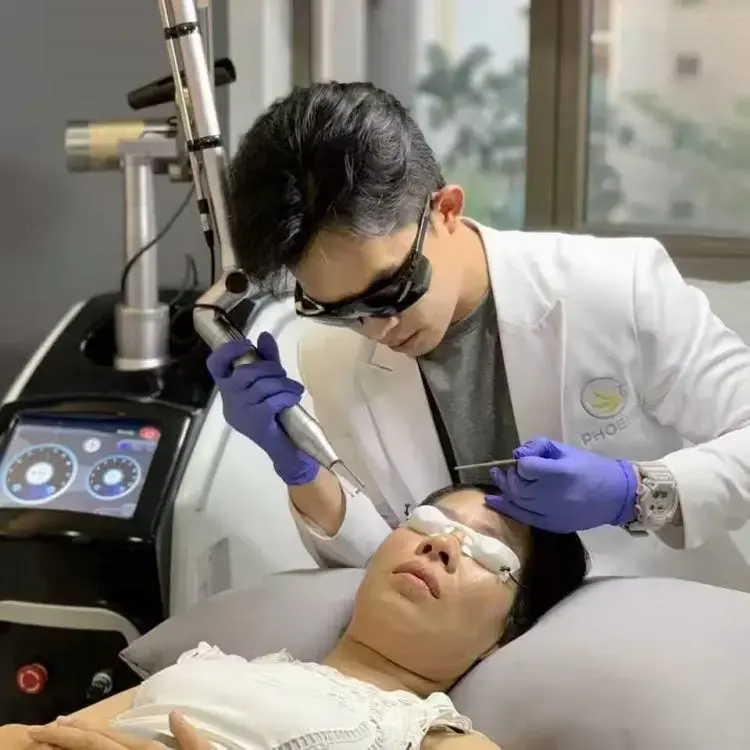
FAQ
Q: How many treatment sessions are typically required with nd yag q switched 532 nm 1064 nm laser for pigmentation removal?
A: Most superficial pigmented lesions require 2-4 sessions, while deeper pigmentation may need 4-8 treatments spaced 6-8 weeks apart for optimal results.
Q: Is the nd yag q switched 532 nm 1064 nm laser safe for all skin types?
A: Yes, this laser system is safe for all Fitzpatrick skin types when proper treatment protocols are followed by experienced practitioners.
Q: What is the downtime after nd yag q switched 532 nm 1064 nm laser treatment?
A: Minimal downtime is expected, with mild redness and possible crusting resolving within 7-10 days. Normal activities can usually resume immediately.
Q: Can nd yag q switched 532 nm 1064 nm laser treat both tattoos and pigmented lesions?
A: Yes, this versatile system effectively treats various tattoo colors and natural pigmented lesions using appropriate wavelength selection and energy parameters.
References
1. Anderson RR, Parrish JA. Selective photothermolysis of cutaneous pigmentation by Q-switched laser pulses. Journal of Investigative Dermatology. 1989;93(1):28-32.
2. Rosenbach A, Williams CM, Alster TS. Comparison of the Q-switched alexandrite (755 nm) and Q-switched Nd:YAG (1064 nm) lasers in the treatment of benign melanocytic nevi. Dermatologic Surgery. 1997;23(4):239-244.
3. Kunachak S, Leelaudomlipi P. Q-switched Nd:YAG laser treatment for acquired bilateral nevus of Ota-like macules. Dermatologic Surgery. 1999;25(12):938-941.
4. Taylor CR, Anderson RR. Ineffective treatment of refractory melasma and post-inflammatory hyperpigmentation by Q-switched ruby laser. Journal of Dermatologic Surgery & Oncology. 1994;20(9):592-597.
YOU MAY LIKE













